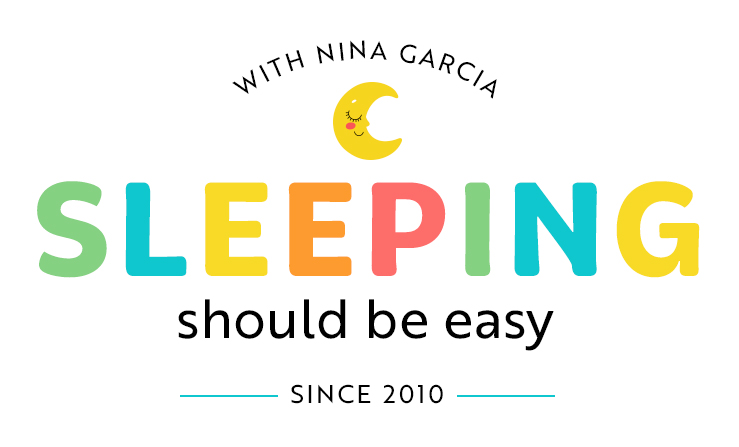Toddler Has Sudden Separation Anxiety at Bedtime
Does your toddler have sudden separation anxiety at bedtime? Learn how to handle this sleep regression and get them to sleep well once again!
 My toddler had been sleeping through the night since he was 6 months old, leading me to think that we’d forever have our nights to ourselves.
My toddler had been sleeping through the night since he was 6 months old, leading me to think that we’d forever have our nights to ourselves.
But then, instead of being able to fall asleep on his own, he suddenly couldn’t seem to do it and would cry hysterically for a long time. Out of nowhere, the only way to get him to fall asleep was for us to be in the room with him.
I didn’t want to start any habits like staying in his room for an hour before he fell asleep. I also knew that he’d wake up and cry for us again, whereas I wanted him sleeping through the nighttime. Waking up multiple times made me feel like a newborn mom all over again.
Thankfully, I was able to find a few methods that helped ease him back to sleeping on his own, all while being mindful of the anxiety he felt. Take a look at these tips to learn how:
Table of Contents
1. Have a bedtime routine
You may not be able to control your toddler’s anxieties, but you can prevent them in the first place. And one of the best places to start is with a consistent bedtime routine.
The reason routines are so effective is that they build habits and expectations that become automatic. By doing the same things at the same time and in the same order, your child doesn’t have to wonder what’s coming up next.
When every night looks the same, she can divert her energy into other, more productive thoughts and activities. The consistency also provides a gentle familiarity that can soothe the anxieties she might have.
A few ways to have a consistent bedtime routine include:
- Putting her down at the same time every night.
- Doing the same bedtime activities, like bathing and reading books.
- Going through the same motions within each activity, like shampooing first before scrubbing her body.
- Saying the same goodnight farewells, like “Good night, sleep tight!”
- Giving the same number of hugs and kisses each night.
Expert tip
Before bed, ask her what her favorite part of the day was. Talking about something that makes her happy right before sleep can change her mindset and get her sleep off to a good start.
Free resource: Want to teach her to self soothe and sleep on her own? Whether you’ve tried to teach her in the past or are just now considering it, take a look at the 5 key mistakes to avoid. Grab this resource below—at no cost to you. You’ll also get my newsletters, which parents say they LOVE:
“I am SO GLAD I found your website. Your words have been a balm for me.” -Bri G.
2. Modify your toddler’s environment
Could a few simple tweaks to your toddler’s sleep environment help with separation anxiety? Sometimes all it takes are a few changes to ease his worries and help him sleep well once again.
For instance, plug a simple nightlight in his bedroom so that he isn’t left alone in the dark. (Or move the nightlight so that it doesn’t cast scary shadows that are the source of his nighttime fears.) Maybe you give him a stuffed animal or lovey specifically for sleep, a special item to clutch as a comfort.
You can also offer to keep the hallway light on so he can see it peeking beneath the door, or leave the door a few inches open so he doesn’t feel so enclosed. Maybe he gets to sleep with a special item of yours, like an old stuffed animal or even your pillow, to remind him that you’re nearby.
And lastly, spend fun, quality time in his room during the day. That way, he feels like he’s falling asleep in a familiar room, especially after hanging out and playing in it earlier.
3. Do strategic check-ins
For your toddler to learn how to fall asleep on her own, she has to be given the chance to do so. Allowing her to sleep in your bed or you staying in her room all night only enables the habits you may not want to keep down the line.
But then, of course, you’re worried about causing her distress, especially since she struggles to be apart from you. How can you help her transition to sleeping alone while still maintaining your own boundaries?
Do strategic check-ins.
When you lay her down, do so from a loving place, reminding her that you believe she can do this. If she’s crying, set your timer for five minutes. When the timer goes off, go into her room to remind her that you’re still here and that she’s doing a good job sleeping on her own.
Keep these check-ins brief, around 30 seconds. The goal isn’t to calm her down so much as to remind her that you’re here. Try not to pick her up or linger for long. Of course, if she needs a diaper change or she’s standing up, then yes, pick her up. But for the most part, keep it brief.
Do the same at 10 minutes, again at 15 minutes, and in 15-minute intervals thereafter, should you need to. If she’s not crying, then you can celebrate that she fell asleep on her own.
Should she cry in the middle of the night, do the same process, checking in at 5, 10, and 15-minute intervals until she falls asleep. You’re giving her a chance to fall asleep on her own, but checking in on her so she doesn’t think you’re gone.
4. Gradually ease yourself out
Does hearing your toddler cry wrench your heart? Another option is to ease yourself out of her room.
Let’s say she insists that you sit next to her bed until she falls asleep. Agree to do so, but explain that you’ll be moving farther away each night until you’re out of the room.
So, on the second night, move the chair a foot away from her bed. The next night, move it another foot, making your way toward the door. Once you’re by the door, sit on the chair in the hallway with the door ajar.
Another idea is to reduce the time you spend in her room.
When my eldest was transitioning to a toddler bed, my husband slept on the floor next to him the entire night. By the next night, he said he’d stay there until the middle of the night. Then, he stayed until my son fell asleep, and from there, for 30 minutes, before finally being able to say good night and leave.
By easing yourself out of the room, your toddler can slowly adjust to sleeping on her own.
5. Be consistent with the method you choose
Dealing with a crying toddler in the middle of the night—or even at bedtime—can be a challenge, especially when you’re exhausted. It’s so much easier to cave in and let her sleep in your bed as she asked, or even to snap at her and get angry.
Instead, be intentional with what you plan to do, and stick to it. Having a plan makes you less likely to veer off course, especially when you know why you’re doing it. Give yourself several days to stay consistent, and don’t abandon your plan because it didn’t go well the first night.
The more consistent you are, the stronger the message you’re sending. That you won’t cave and come get her because she cried long enough.
6. Practice being separate during the day
One of the reasons your child might be anxious at night is because he already feels that way during the daytime.
He’s clinging to you when you’re together, refusing to let you go for simple or quick breaks. Even the times you’re apart may not be enough, since he goes right back to doing the same once you’re reunited.
What can you do when a child is overly attached to one parent? Practice being separate even when you’re together.
Nurture independent play so he reaps the internal benefits of being on his own. Avoid hovering and instead, give him more autonomy, only stepping in when necessary. Play peek a boo as a way to teach object permanence. Have him take naps in his room while you’re elsewhere in the house.
You can also encourage attachment to other adults and caregivers, like weekend park outings with grandma. That way, he gets used to having others, and not just you, around.
The more you can help him through separation anxiety during the day, the better he can learn to cope with it at night.
7. Stay calm and confident
It’s easy to get upset and lose your cool when your toddler has once again woken up in the middle of the night.
Thing is, the way you feel rubs off on him. Feeling impatient might make him feel bad about himself, while anxiety could be “proof” that confirms his bedroom isn’t the best place to be.
Either way, it’s pretty difficult for him to fall asleep when you’re anxious and upset. Imagine yourself in the same shoes—it’s not exactly a calm and peaceful environment to fall asleep.
Because what seems like a reasonable time apart—we are asleep for most of the night, after all—can feel like an eternity for him. Parents forget that saying goodnight can seem like saying goodbyes for a long period of time.
Instead, project the calm and confidence he needs to see and feel. Reassure him through your demeanor that he’s safe and that you know what you’re doing. Focusing on your mood also makes you less likely to lose your temper and be more patient, reminding you that he needs you most at times like these.
8. Don’t sneak out of your child’s room
It’s tempting to sneak out once your child is asleep and head back to your room. After all, you might buy yourself a few hours of sleep before he wakes up frantic again.
But doing so only confirms his fears that you’ll disappear the minute he falls asleep.
If you do agree to stay in his room until he falls asleep, let him know that it’s only for tonight, and that you plan to go back to your room. Remind him that when he wakes up you’ll be back in your bed, so he knows what to expect.
Conclusion
Separation anxiety, especially around bedtime, can come as a surprise, leaving parents worried that they’re back to feeling sleep deprived. Rest assured that this is common for many kids, and, more importantly, that you can do something about it.
To start, implement a solid bedtime routine to ease your toddler’s anxieties. Change her environment, from adding a nightlight to leaving the door open. Do strategic check-ins to give her a chance to fall asleep on her own.
And if that’s not your style, you can gradually ease your way out of her room, whether inching your way out or shortening the time you’re there. No matter what you decide, be consistent, at least for several days, instead of caving in the first night it gets hard.
Your toddler can go back to being a good sleeper, even if this hiccup seemed to have happened so suddenly.
Don’t forget: Join my newsletter and grab this resource below—at no cost to you:


